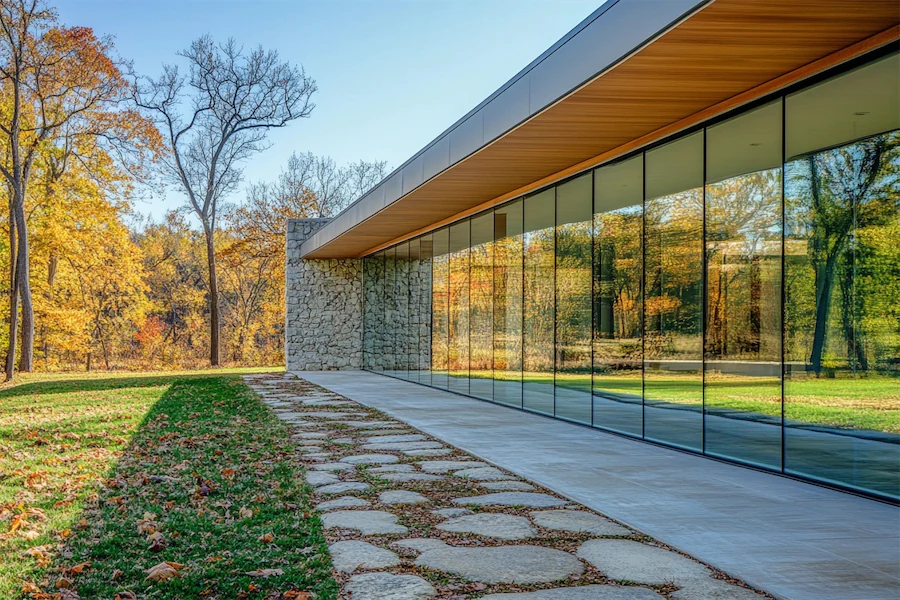Glass curtain walls are non-structural, lightweight exterior facades that primarily consist of large glass panels framed typically in aluminum. These systems do not bear the building’s load; instead, they are designed to resist environmental forces, such as wind and rain, while allowing natural light to penetrate deep into the interior spaces.
Introduction to Glass Curtain Walls
Glass curtain walls serve as protective, non-load-bearing exteriors that enhance a building’s aesthetics and energy efficiency. By forming a continuous, transparent envelope around structures, they create a visual connection between the interior and exterior environments, contributing to a sense of openness and modernity.
History and Origins of Glass Curtain Walls
The concept of curtain walls emerged in the early 20th century with advancements in steel and glass manufacturing. However, it was the post-World War II era that saw a significant rise in their popularity, largely due to the increased availability of aluminum and the desire for modern architectural expressions. This period marked the transition from traditional masonry exteriors to sleek, glass-dominated facades.
Key Features of Glass Curtain Walls
- Transparency and Natural Light: The extensive use of glass maximizes daylight penetration, reducing the need for artificial lighting and creating a more pleasant indoor environment.
- Aesthetic Versatility: Glass curtain walls offer a modern and sleek appearance, allowing for various design possibilities, including different colors, textures, and reflective properties.
- Energy Efficiency: When combined with high-performance glazing, these systems can improve thermal insulation, thereby enhancing the building’s energy performance.
- Lightweight Construction: Being non-load-bearing, glass curtain walls reduce the overall weight of the building envelope, which can lead to cost savings in structural support.
Applications of Glass Curtain Walls
- Commercial Buildings: Widely used in office complexes, shopping centers, and hotels to create inviting and open spaces that connect the interior with the exterior environment.
- High-Rise Structures: Ideal for skyscrapers and tall buildings, where the lightweight nature of curtain walls reduces the load on the foundation and structural framework.
- Institutional Buildings: Employed in schools, hospitals, and government facilities to provide ample natural light and a modern aesthetic.
Considerations When Choosing Glass Curtain Walls
- Thermal Performance: Selecting appropriate glazing options is crucial to prevent heat loss in colder climates and reduce heat gain in warmer regions.
- Acoustic Insulation: In noisy urban environments, incorporating acoustic glass can help mitigate external noise, enhancing indoor comfort.
- Maintenance: Regular cleaning and inspection are necessary to maintain the appearance and functionality of glass curtain walls, especially in areas prone to pollution or harsh weather conditions.
- Structural Integration: Proper coordination with the building’s structural system is essential to ensure that the curtain wall can accommodate movements due to thermal expansion, wind loads, and seismic activities.
Conclusion
Glass curtain walls have revolutionized modern architecture by providing a harmonious blend of functionality and aesthetics. Their ability to create transparent, light-filled spaces while offering environmental protection makes them a preferred choice in contemporary building design. When thoughtfully integrated, glass curtain walls not only enhance the visual appeal of structures but also contribute to the well-being and comfort of occupants.
